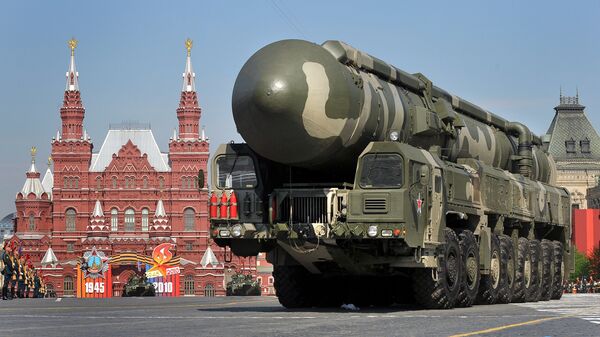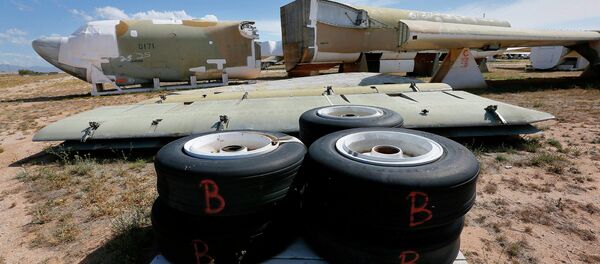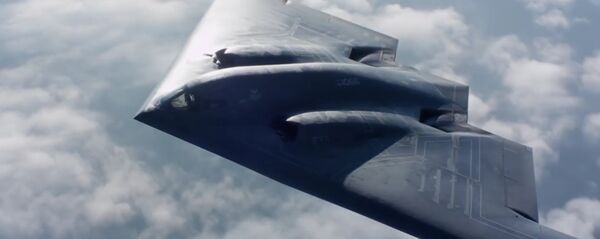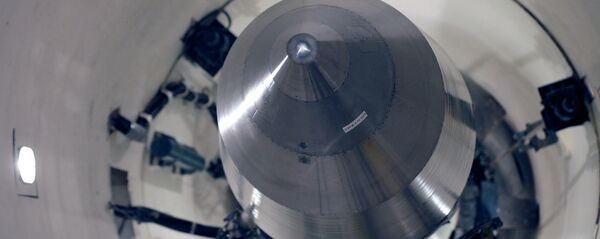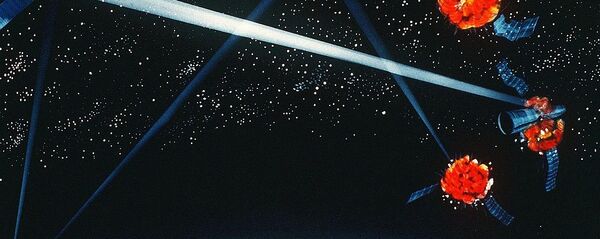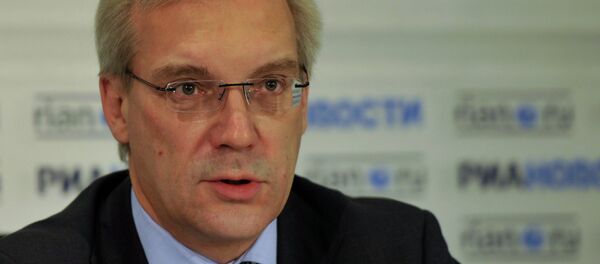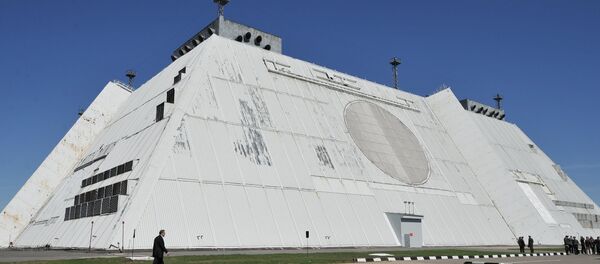"Russia fully shares the noble goal of a nuclear-free world and confirms this fundamental point with specific steps. Currently we are systematically getting to the full-scale implementation of the New START," Ilyichev said.
However, he stressed that further progress in nuclear disarmament "is impossible without serious preparatory work", which should be based on the principle of "strengthening strategic stability, equal and indivisible security for all states without exception."
In his speech, Ilyichev also highlighted factors that do not contribute to strengthening global stability. According to experts, those factors make any further reduction of Russia’s nuclear arsenal dangerous to Russia’s national security and its nuclear parity to the US.
Global Missile Shield
At the time, the agreement fairly reflected the actual situation. Russia and the US still have the world’s largest nuclear arsenals. The Moscow-Washington nuclear parity which guarantees mutually assured destruction was the basis for the global power balance during the Cold War. However, today the US is trying to shift the global balance of power in its favor.
"Moscow has repeatedly raised concerns over the alarming situation related to the unilateral and unrestricted deployment of the US missile defense in different parts of the world. The situation is nearing a deadlock," Ilyichev noted.
Talking about the US missile shield, Ilyichev referred to the deployment of US missile defenses in Eastern Europe as well as the buildup of Aegis-equipped warships. Such naval groups can be deployed to different parts of the World Ocean. However, the Pentagon has repeatedly said that those measures are not directed against Russia.
"The Americans constantly upgrade their missile defense capabilities. By 2018-2020, the US will have systems capable of intercepting with high accuracy intercontinental ballistic missiles. They’ve made significant progress in the field. For example, recently an SM-3 intercepting missile took down a satellite with a kinetic strike, at an altitude of 250 km. The Pentagon will continue to develop echelon-ranged missile defenses in different parts of the world," Russian military expert Igor Korotchenko told Sputnik.
Non-Nuclear Strike
The Prompt Global Strike (PGS) conception has long been in development by the US. The PGS presumes a system that can deliver a massive conventional high-precision weapons strike, first of all with the use of cruise missiles.
Among its possible targets are missile silos, strategic airfields, submarine bases, command points and various fortified facilities. Such a goal is aimed at destroying the bulk of the enemy’s nuclear potential.
"For Washington, nuclear weapons have lost their initial meaning. They can be reduced without a negative effect to the US national security. At the same time, the US is calling on Russia to do the same. By developing the global missile shield and high-precision weapons, the US can gain an advantage [over Russia]. If Russia did what they’re asking for it would have some 100-150 missiles incapable of reaching US territory," Korotchenko pointed out.
According to Korotchenko, Ronald Reagan’s Strategic Defense Initiative (commonly nicknamed as "Star Wars") was scrapped because at the time it was technically impossible but now space weapons are close to becoming a reality.
Conventional Weapons in Europe
"Russia stands for a new control regime that would comply with the current military and political situation on the continent. In 2009, Moscow offered a project of a comprehensive agreement on European security. However, the proposal has been ignored. We stay open for dialogue on an equal basis and with consideration of interests of all parties involved," Ilyichev said.
In 2007, Russia suspended its participation in the 1990 Treaty on Conventional Armed Forces in Europe (CFE). The agreement restricted the size and deployment of conventional armed forces along the line between NATO and the Warsaw Pact. Despite the fact that after the collapse of the USSR and the Warsaw Pact several amendments were made to the document, Russia was not a full-fledged party to the treaty, especially after the Baltics and Eastern European countries joined NATO.
According to Korotchenko, NATO needs to meet three conditions in order to make further nuclear disarmament possible.
"First, the US should withdraw from Europe its tactical nuclear weapons. Second, a treaty is needed to restrict the deployment of the US missile shield. Finally, the disarmament process should involve third NATO nuclear countries, such as France and Germany. Apparently, Washington and its allies will not go there. As a result, Russia should develop its nuclear arsenal instead of recklessly decreasing it," Korotchenko said.
Never miss a story again — sign up to our Telegram channel and we'll keep you up to speed!
